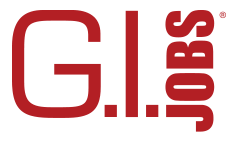So you’ve submitted your resume to multiple jobs, and it finally happened … you got a call for an interview! Make sure you land the job by avoiding these four common interview mistakes.
1. Inappropriate attire.

If your interviewer is experienced, he or she won’t care more about your clothes than your qualifications. But your interviewer may not be very experienced, and he or she may have a lot of candidates to sift through.
Standing out from the crowd because of your attire will make a bad impression and may lead to a hard interview. In a worst case, it might make you an easy throwaway as the interviewer narrows down the candidates. Read about how to develop a professional wardrobe here.
Ultimately, you want to “blend in” by your appearance so that your actual conversation with the interviewer stands out.
The rule of thumb is to wear a suit. Don’t overthink this. A professional suit is dark gray or dark blue and without a conspicuous pattern (avoid noticeable pinstripes or checks, no matter how much it looks like something your favorite sports star would wear). Wear a white or light blue collared shirt – solid colors are more formal than patterns, and you shouldn’t have any pattern other than vertical stripes in a white/blue combination.
For ties and other accessories, select colors with an eye to their effect on others. Blue suggests friendliness and teamwork; red suggests power. Avoid red unless you are interviewing for a supervisor or managerial position. And stay away from black suits – they look oddly formal – or strange shirt/tie combinations (e.g. yellow or maroon-toned).
They’ll only make you stand out and cause the interviewer to pay more attention to your clothes than your interview.
Sometimes the interview instructions tell you not to wear a suit, usually because you’ll be visiting a plant or factory. Also, some newer companies, especially from the West Coast, deliberately avoid more formal clothes.
In that case, creased khaki pants and a collared shirt are appropriate, with a belt and leather shoes (boots are acceptable too). The same color rules apply as for suits: pants should be khaki, dark blue, or gray; shirts should be light-colored without a conspicuous pattern. A polo shirt or a button-down shirt is equally acceptable. This kind of interview wear is also appropriate for an interview for a field job (like service technician) or a manufacturing job.
2. Fail to research the company.
Some veterans think that when the call comes for an interview, they have a high probability of getting the job. Maybe that’s why many just assume they’ll be able to impress the interviewer. But it’s not uncommon for interviewers to ask candidates to respond to questions that are based on situations specific to the job for which they are interviewing.
What interviewers are looking for in these questions is whether or not you understand the basic structure, job requirements, and job responsibilities of the position – and whether or not you have the experience and/or qualifications to be successful.
A lot of the information you’ll need to answer these questions is found in the job description, which you should know thoroughly.
READ NEXT: CREATING A CIRCLE OF COLLEAGUES
Little things, like using the correct titles for your potential co-workers and using the correct terminology for equipment and projects, will leave the interviewer with the impression that you have experience, i.e. that there won’t be much for you to learn on the job.
A little research into company core values, recent company history, and essential company products or services will also help you connect your own military skills to the company as a whole.
Meeting interview questions with a blank stare or a request for more information makes you seem inexperienced, unprepared, and even lazy. However, if you do get a question that’s very specific and you need more information to answer, don’t be afraid to ask the interviewer to elaborate. The best way to do that is to say, “Do you mean like…?” inserting something that relates from your own experience.
The next best thing to knowing everything is to be willing to learn and try – so keep an interested tone. Don’t try to bluff your way out of the question by offering an answer that turns out to be irrelevant. That usually puts you squarely in the category of “not qualified.”
3. Rambling.
It can be disconcerting to answer pointed questions about your experience, especially from a civilian. It’s worse when you don’t know if your answers are impressing the interviewer. There is a natural tendency in those situations to mentally grasp for relevant things to say, which come out as incoherent ramblings. That’s awkward for the interviewer, and it makes it hard for him or her to ascertain your true fitness for the job.
Avoid this by rehearsing answers to common interview questions.
Identify your military experiences that relate to the job by showing you have specific skills or traits noted in the job description. Practice both explaining your experiences in language a civilian would understand and tying those experiences to your potential job.
If it helps, write down what you want to say. Clear explanations make a great impression in an interview. Just don’t recite answers, because it will make you look like you’re telling the story of someone else.
A good way to structure your answers – even the unexpected ones for which you haven’t rehearsed – is to follow the STAR method: Situation, Task, Action, Result.
Explain the situation, clearly state the task you had to accomplish (ideally related to something you’ll have to do in your potential new job), explain the actions you took, and finish with the results of those actions. Don’t be afraid to use “I” instead of “we” in your answers, either – the interviewer wants to know about you, not your team or your unit. The STAR method will help you deliver concise, clear answers without rambling.
4. Leave without asking questions.
Nearly every interview concludes with the interviewer asking if you have any questions for him or her. This represents a great opportunity for you: first, that you can demonstrate your interest in the job by seeking information; second, that you can subtly flatter the interviewer by giving them an opportunity to talk about themselves – which they’ll remember in the back of their head when they start ranking candidates.
Have a list of questions prepared about the position and the company that show you’re thoughtful and interested. Just remember to be interested in the answers!
In the end, an interview is a conversation. Remember that you will have to engage your interviewer, which means listening to the questions, maybe taking a brief instance to compose your answer, and accessing your military experiences to show how well you’re suited for the job.
Prepare, look the part, deliver your answers clearly, and the interviewer will see you as a fellow employee before you exit the interview room.
READ NEXT: 9 TIPS FOR SETTING AND STICKING TO A PERSONAL BUDGET




